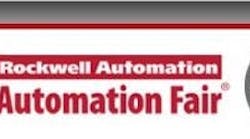When you make active ingredients for generic pharmaceuticals, you're always multitasking—chasing time, introducing new products, seeking stable production volumes and maintaining compliance—so any help with all these jobs is greatly appreciated, according to Girish Deshmukh, vice president of engineering and projects, Dr. Reddy's Laboratories Ltd., Hyderabad, India.
"We want electronic logbooks linked to our historians, recipe workflow execution and batch control data because we need manufacturing intelligence," says Deshmukh. "Then we can add overall equipment effectiveness (OEE) and other data sources, and generate batch reports and verifications about production downtime and moving quality targets."
Deshmukh and Sandeep Redkar, manager of process solutions, Rockwell Automation India Pvt., Ltd., presented "Drug manufacturer achieves operational excellence through plantwide integration," at the Process Solutions User Group (PSUG) before the opening of Automation Fair this week in Atlanta.
Overall, the $2-billion firm runs three businesses—pharmaceutical services and active ingredients, global generics, and proprietary products—and their products and services include APIs, custom drug services, generics, biosimilars and differentiated formulations.
Journey to optimization
Deshmuhk reported that Dr. Reddy's began its latest trip to performance optimization through better data in 2010 at its active pharmaceutical ingredients (API) plant in Visakhapatnam, India, and is driving operational excellence by expanding its combined distributed control system/manufacturing execution system (DCS/MES) at the facility. The project's first phase included 9,800 I/O points, servers and software that began operating in 2014, and a scale up of another 10,500 I/O and support components that are scheduled to go live in December. Equipment monitored and managed at the plant include reactors, centrifuges, dryers, weigh scales, barcode scanners and other support devices.
[sidebar id =1]"We began working with Rockwell Automation when we integrated the DCS and MES, and enhanced operational transparency to improve quality and meet regulatory norms," explained Deshmuhk.
Together, the two firms integrated and connected the plant's quality by design (QBD) and supervisory control and data acquisition (SCADA) functions like online recipe management, and implemented an action plan to enable multivariate analysis and other capabilities. "As a result, operators didn't need to switch screens as much anymore because they could view both DCS and MES displays at the same time."
Simpler architecture is swifter
Because the API plant used to have so many manual operations and documentation, Deshmuhk reports all those human interventions could slow it down. "What we really wanted was to get to a paperless plant, where the SAP enterprise system could send an order to the MES, which could examine available stock and tell the DCS and batching systems to pull ingredients and begin processing them," he said. "We wanted to standardize on individual recipes and have one version of the truth, so production could be managed and maintained by regular operators without knowing anything about software programming."
Consequently, the plant's architecture was revamped to include the PlantPAx modern distributed control system as its DCS, PharmaSuite software at the MES level, and SAP for enterprise resource planning. These enabled common views into operations, while also reducing software and spare equipment inventories, required training and control hardware, according to Redkar.
"We also have some equipment with Profibus DP networking at the plant, so we also integrated some Rockwell Automation devices," said Redkar. "This base architecture has scalability for small to large applications, while its service-oriented architecture (SOA) uses a common set of shared services or behaviors. Standard batch management complies with the S88 and uses FactoryTalk Batch PhaseManager software. All of these efforts have been proven right because we can add new reactors and blocks of equipment without any loss of production."
Deshmuhk added that Dr. Reddy's learned several valuable lessons from implementing its combined DCS/MES architecture at the API plant. "We found out about incompleteness of business requirements, the underestimation of workloads and resource availability, and how much learning and adaptation the new system would need," he added. "We also learned it's important to incorporate site-specific feedback during deployment, organize change management, and have adequate resources with each partner.
"However, the result is we now have one batch ID for accessing everything, and the system captures all the data. As a result, the MES shows us all deviations on dashboards. This gives us quick changeovers when we need to manufacture drugs fast, and the flexibility to design new recipes and products when needed. We want to put all our plants on combined MES/DCS platforms."
[sidebar id =2]






